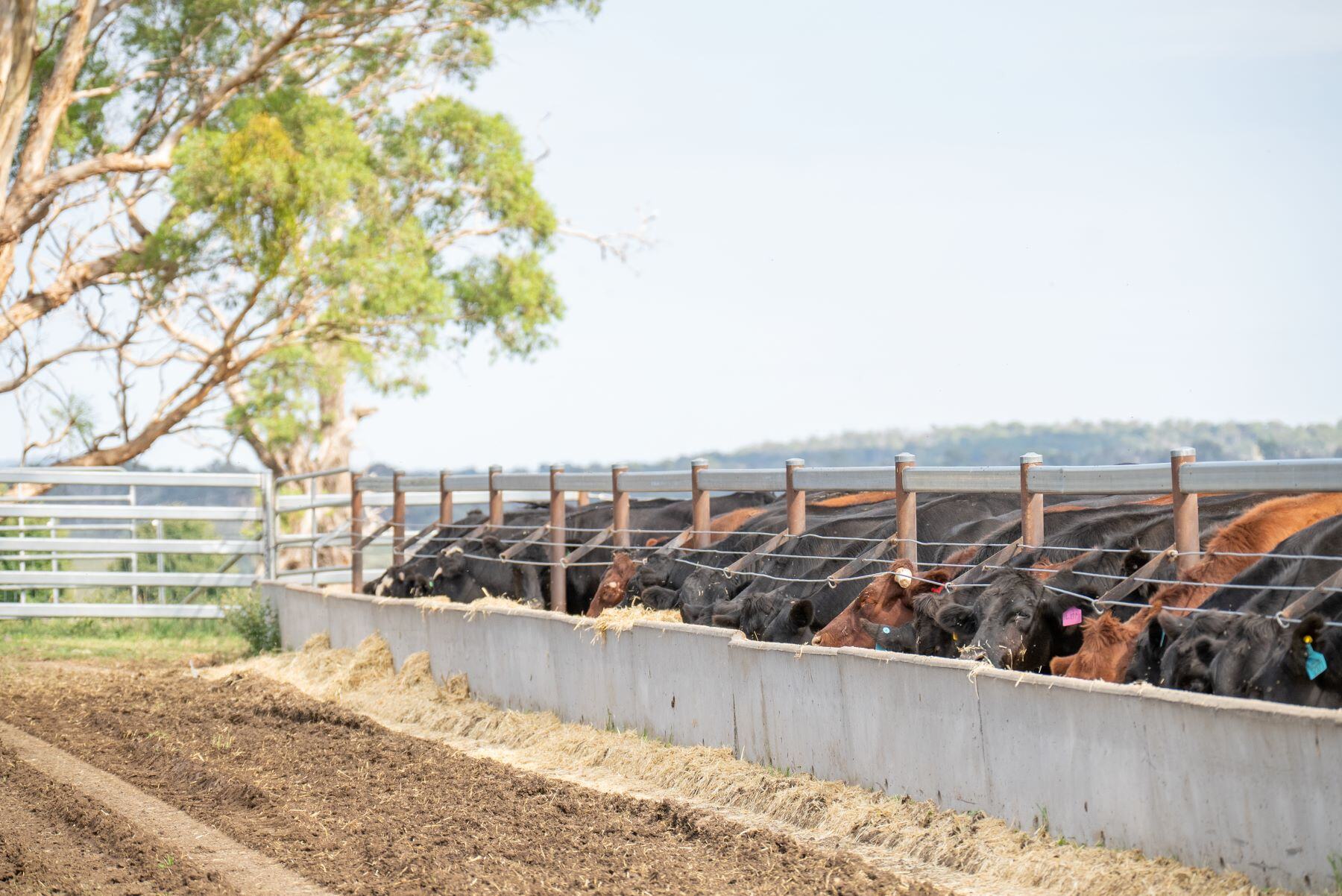The Australian Beef Market in 2025: An Absolute Cracker
In this column in July, the StoneX H2 2025 Australian Cattle & Beef Market Outlook’s bold calls were analysed and assessed for what the final 6...
2 min read
Erin Lukey, MLA Senior Market Information Analyst : Nov 18, 2024

National turnoff lifted 39% to 859,930 for the second-largest quarter on record.
National Capacity and Numbers on feed remain strong at records above 1.4m and 1.6m respectively.
Grainfed beef exports reach records, driving record total beef volumes.
The Australian Lot Feeders’ Association (ALFA) and Meat & Livestock Australia (MLA) have released results from the quarterly Lot Feeding Survey. This survey collects data from National Feedlot Accreditation Scheme-accredited feedlots across the country, covering the sector’s capacity, number of cattle on feed, and turn-off across each state. The findings are compiled into the quarterly Lot Feeding Brief.
Over the past five years, the Australian feedlot sector has grown by 24%. Despite slowed growth this quarter, the sector remains strong, with the number of cattle on feed staying above 1.4 million head, sustaining record-breaking growth. Capacity has held steady at 1.6m head, resulting in a stable utilisation rate of 87%.
National turn-off in the third quarter rose by 39% (or 241,913 head) to 859,930 head, marking the second-largest quarter on record. High numbers on feed have now flowed through the system as cattle finish feeding programs. Encouragingly, the sustained numbers on feed suggest that the high turn-off is not a signal of reduced capacity or intensity in current programs.
Queensland, the largest lot feeding state, slightly declined this quarter in both capacity and cattle on feed. Capacity decreased by 1%, while cattle on feed dropped by 3% to 829,2128 head, maintaining 90% capacity. The state turned off just under half a million head, up 10% to 499,834 head, the third-largest figure on record.
NSW continues to set state records, increasing capacity by 1%, and numbers on feed by 3%, reaching 397,342 head with an 84% utilisation rate. Favourable conditions allowed feedlots to restock pens, lifting numbers by 42% from the previous quarter to 277,883 head.
In SA, dry conditions encouraged greater use of feedlots for finishing. The sector achieved record capacity, up 6%, and record numbers on feed, up 9% to 75,697 head. Utilisation was nearly at a record 96% despite a record turn-off, which rose by 8% to 46,690 head.
The Victorian lot feeding sector experienced minimal change, with capacity and utilisation remaining stable in Q3. Numbers on feed eased by 1% to 59,762 head. Victoria was the only state to decrease its turn-off rate, which dropped 5% to 39,869 head. Unlike SA, Victorian feedlots appear less inclined to absorb cattle for finishing despite dry conditions.
WA experienced an unusually large quarter. Typically a seasonal sector, Q3 is generally the low point, however, this quarter saw growth across all data points. Capacity rose by 8%, numbers on feed increased by 26% to 62,393 head, resulting in a 70% utilisation rate. Turn-off also climbed 35% from the previous quarter to 45,654 head.
For the first time on record, grainfed exports in the September 2024 quarter exceeded 100,000 tonnes carcase weight (cwt), up 11% from the previous quarter record and 19% higher than the same period in 2023. Despite and overall increase in total beef exports, the grainfed portion held steady at 28%. The ongoing drought in the US has impacted global red meat export dynamics, driving demand for Australian beef.
Japan, despite a 9% decrease, remains Australia’s largest grainfed market, importing 32,511 tonnes cwt, or 32% of all grainfed exports. This reduction opened opportunities for record-breaking exports to China and Korea.
China accounted for 25% of grainfed exports, importing 25,059 tonnes cwt, while Korea, our third largest market, made up 21% of exports, with 21,301 tonnes cwt.
The remaining 22% went to other markets, with grainfed exports to the US rising by an impressive 59% to 4,661 tonnes cwt.
Both major feedlot inputs, livestock and feed, have increased this quarter, placing additional pressure on feedlot margins. However, a reduction in both input prices over September offers a positive sign.
For further details on quarterly price and supply commentary, read the September 2024 Quarterly Lot Feeding Brief.
.jpg)
In this column in July, the StoneX H2 2025 Australian Cattle & Beef Market Outlook’s bold calls were analysed and assessed for what the final 6...
.png)
Each December we save the last article of the year for a bit of a crystal ball gaze, as we try to bring together market fundamentals and work out...
.png)
Australia’s wool market posted another strong performance this week, with all micron categories attracting solid support across the three selling...